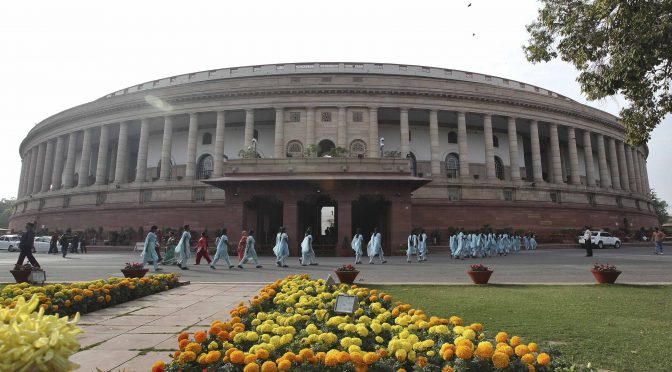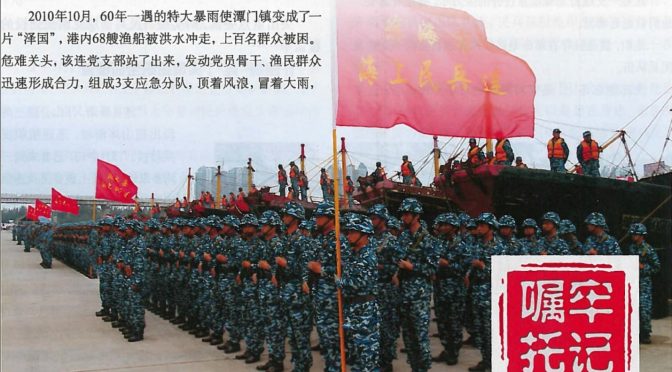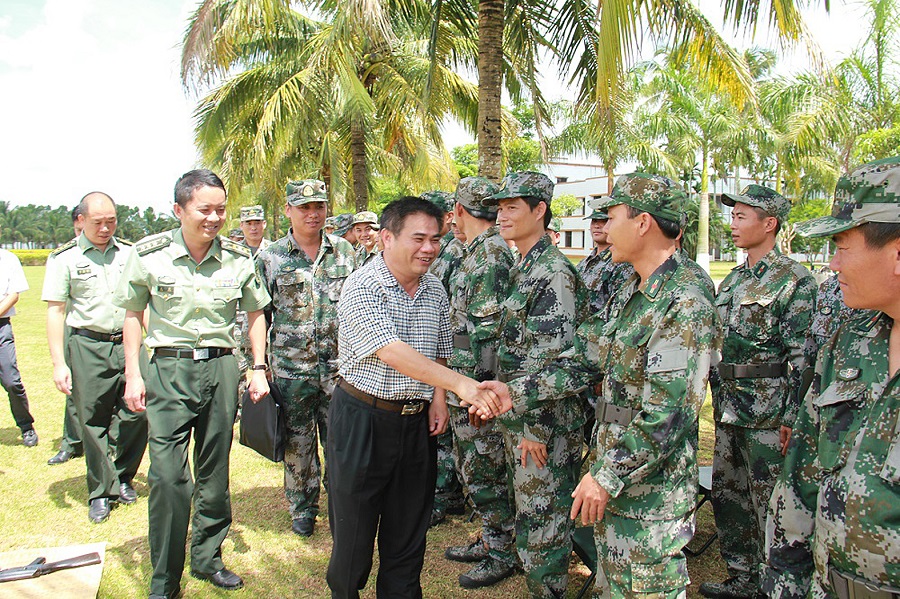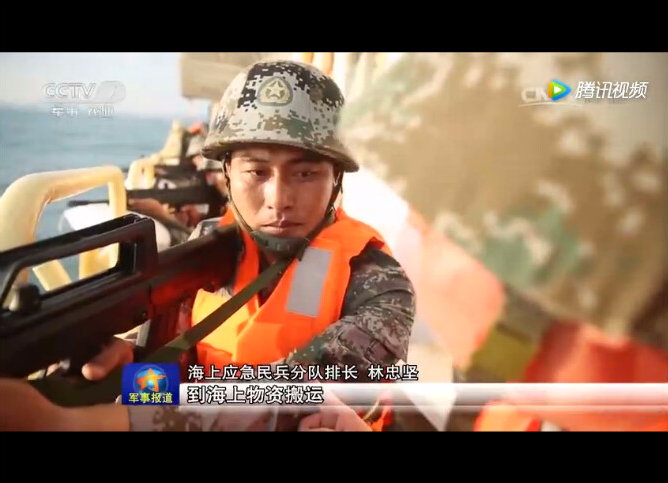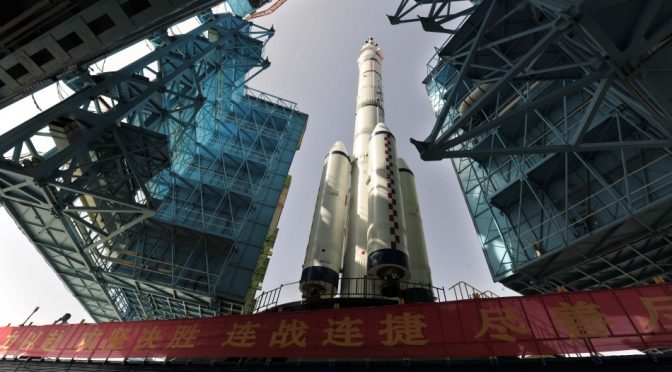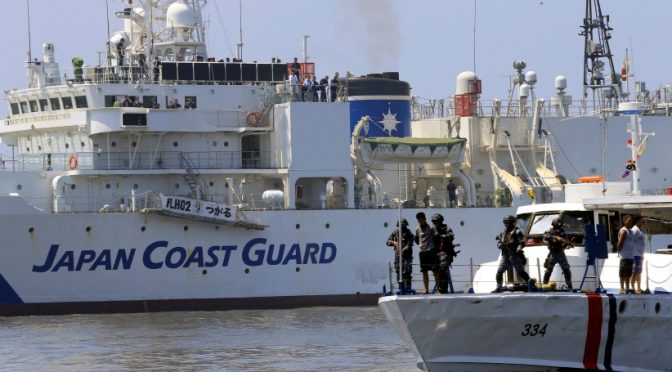Note: Original title of essay: “Rising in the Storm: India’s Bid for Global Power in a Multi-Polar System During Development.”
By Corey Bolyard
India is the most populous democracy in the world with 1.2 billion people and potential for intense economic growth.1 India seeks to protect its regional interests and become more involved in global power politics while balancing the needs of its economy and people. India must engage in economic reform to stimulate development and support an increasingly assertive foreign policy. By engaging in economic reform, India will have the opportunity to develop and exploit its large population and economic opportunity to become a global power in an increasingly multi-polar system, thereby allowing for an ambitious foreign policy permitting India to protect its interests in South Asia and act as the preeminent power in the region.
Economic development is key to India’s global status. Without a strong economy, India cannot provide for its citizens, much less engage in global affairs and find its place in a multi-polar system. India has a GDP of 2.2 trillion USD, but 30 percent of the population lives in poverty, hindering India’s continued growth.2 India’s Prime Minister, Narendra Modi, promised substantial economic reform and introduced the “Make in India,” program in 2014, but the democratic process is slow. “Make in India,” is a nationalistic program that would boost India’s growth from within and improve the manufacturing sector.3 Manufacturing would provide a low-education alternative to India’s waning agricultural industry, but current labor laws stunt this sector, leaving few options for this segment of the population.4 Internal manufacturing would advance domestic development, but requires foreign investment to propel economic growth to a competitive global rate. Part of Modi’s proposed reforms would allow increased foreign investment in sectors such as coal, construction, railways, and multi- and single-brand retail, which would allow India to boost development.5 Many promised reforms are either in progress or incomplete. A demonetization reform took high currency bills out of circulation in late 2016 to curb the black market economy.6 India is in the process of digitization, moving toward a cashless economy, which would help reform tax administration and enhance government revenue.7 Modi’s government has showed a willingness to engage in economic reform despite the difficult process, and must continue to push for economic development driven by external aid and internal growth to elevate India to global leadership in an increasingly competitive global political stage.
India’s vivid democracy plays a key role in its economic advance. India’s citizens are engaged in democracy, with a voter turnout of 66.4 percent in the 2014 parliamentary elections.8 Freedom House, a prominent NGO, denotes India as “Free,” with press and net freedoms as “partially free.”9 Transparency International ranked India 79 in the world in its 2016 Corruption Perceptions Index, with a final score of 40 that tied India with Brazil, Belarus, and China.10 However, there are some concerns for democracy in India. The Human Rights Watch World Report 2017 identifies a lack of accountability for police violence, treatment of religious and ethnic minorities, and the government’s use of sedition and defamation laws to persecute citizens.11 There is growing economic disparity in the country and a history of corruption, perceived and real. India is experiencing major demographic change, and the government’s ability to exploit this positively will determine future capabilities. India is ending a demographic transition and is almost at replacement-level fertility, which can become a great opportunity for India’s pursuit of global status. India’s working class will continue to grow over the next half-century, as the adult population will comprise 68 percent of India’s population in 2035.12 The demographic dividend is an opportunity for India, but does not guarantee growth, as economic opportunities must be available for this large population.13 Several factors India’s government must resolve include educational deficits, high unemployment, and a policy environment conducive to promoting competitive economic development globally.14 Due to India’s complex democracy at the state and federal level, reform and change is slow to proceed. India’s leadership must find a sustainable way to manage its population and economic goals regardless of their form. Through careful management, India’s democracy can succeed in implementing its domestic and economic policies, which will make it possible for India to focus on its foreign policy concerns.
India sees itself as the preeminent power in South Asia, but is dependent on economic growth for global success. India’s foreign policy focuses on improving relationships among South Asian countries with a “neighborhood first” policy through increased trade and aid.15 Economic integration in the neighborhood is low, as interregional trade makes up only five percent of the South Asian Association for Regional Cooperation’s (SAARC) economic activity.16 With higher integration there is less tension and increased trade, giving India more opportunities to enhance its global position. India and China both see South Asia as a sphere of influence, and India is investing in its neighbors as part of a counterbalancing strategy to China, increasing the Ministry of External Affairs 2017 budget by 200 million USD.17 India sees China’s ‘One Belt, One Road,’ initiative as a threat to its economic and political dominance in the region, particularly the creation of a Chinese-Pakistan Economic Corridor (CPEC).18 Tension between Pakistan and India has great potential for conflict. India is the status quo power of the two nations, since it controls most of the disputed territories, has a stronger military, and has greater diplomatic standing, but both nations possess nuclear weapons and high tensions lead to an elevated risk of conflict.19 India is expanding its military capabilities and is the largest defense importer in the world, buying 15 percent of total world exports of weapons in the past five years.20 India has always followed a strategy of non-alignment and openly eschews cooperative alliances, preferring cooperative or bilateral relations for security. India must balance China and Pakistan, as open conflict would be disastrous and Chinese investment can help the Indian economy grow. In the interest of protecting interests and finding a place in a multi-polar system, India must decide if non-alignment is a viable path going forward or if closer relations with nations such as the United States, Japan, and Australia are worth the risk. Reviving quadrilateral dialogue among these four nations may be the logical next step for India’s foreign policy. A “democratic quad” increases India’s soft and hard power capabilities, but could alienate other countries in the region.21
India’s decisions on economic reform and foreign policy will determine if it remains a developing country or rises to a key place in global politics. The government must find a way to implement economic reform to benefit its demographic dividend. Attracting foreign investment, implementing economic reform, and providing opportunities for its growing population will give India the economic strength to engage in an assertive foreign policy that will help define India’s role as a global leader among competitive powers. India must engage in economic development to support an assertive foreign policy as India navigates changing global power balances to give its people a path forward.
Corey Bolyard attends University of Mary Washington in Fredericksburg, VA where she is majoring in Political Science with a focus in Asian Policy and Regional Security. She is currently working on a thesis concerning China’s “One Belt, One Road” initiative. Upon graduation, she hopes to work in national security analysis. Her round table paper “Rising in the Storm: India’s Bid for Global Power in a Multi-Polar System During Development“ argues that by engaging in economic reform, India will be able to emerge as a global power, thereby allowing for an ambitious foreign policy to defend and develop its interests in the South Asia Region.
Endnotes
1. “South Asia: India,” Central Intelligence Agency: The World Factbook, Dec. 12, 2016, https://www.cia.gov/library/publications/the-world-factbook/geos/in.html.
2. “South Asia: India,” Central Intelligence Agency: The World Factbook.
3. About Us,” Make In India, accessed March 27, 2017, http://www.makeinindia.com/about.
4. “The Difficulties of Retooling the Indian Economy,” Stratfor, 2016, accessed March 28, 2017, https://www.stratfor.com/analysis/difficulties-retooling-indian-economy.
5. “The Modi Government’s Reform Program: A Scorecard,” Center for Strategic & International Studies, accessed March 28, 2017, http://indiareforms.csis.org/.
6. Mukesh Butani, “State election results: Strong mandate for bold economic reforms,” Forbes India, March 18, 2017, accessed March 28, 2017, http://www.forbesindia.com/article/special/state-election-results-strong-mandate-for-bold-economic-reforms/46329/1.
7. Wade Shepard, “A Cashless Future Is The Real Goal Of India’s Demonetization Move,” Forbes, December 14, 2016, accessed March 30, 2017, https://www.forbes.com/sites/wadeshepard/2016/12/14/inside-indias-cashless-revolution/.
8. “India Voter Turnout,” International Institute for Democracy and Electoral Assistance, accessed March 27, 2017, http://www.idea.int/data-tools/country-view/146/40.
9. “India,” Freedom House, accessed March 27, 2017, https://freedomhouse.org/report/freedom-world/2016/india.
10. “Corruption Perceptions Index 2016,” Transparency International, January 25, 2017, accessed March 27, 2017, https://www.transparency.org/en/cpi/2016. Of all the countries listed in TI’s Corruption Perception’s Index, India is listed in the upper half by rank. With a perfect score of 100, India’s score of 40 is lower than its rank.
11. “Human Rights Watch World Report 2016: India,” Human Rights Watch, January 12, 2017, accessed March 27, 2017, https://www.hrw.org/world-report/2017/country-chapters/india.
12. KS James, “India’s Demographic Change: Opportunities and Challenges,” Science 333, no. 6042 (July 29, 2011):578, accessed March 29, 2017, doi:10.1126/science.1207969.
13. KS James, “India’s Demographic Change: Opportunities and Challenges,” Science, 578.
14. Ibid., 578-579.
15. “A Defining Rivalry in South Asia,” Stratfor, February 24, 2017, accessed March 28, 2017, https://www.stratfor.com/analysis/defining-rivalry-south-asia.
16. “A Defining Rivalry in South Asia,” Stratfor.
17. Monish Gulati, “What India’s Finance Budget Means For Its Foreign Policy – Analysis,” Eurasia Review, March 03, 2017, accessed March 28, 2017, http://www.eurasiareview.com/04032017-what-indias-finance-budget-means-for-its-foreign-policy-analysis/.
18. Ananth Krishnan, “India cannot stop Silk Road plan, warns Chinese media,” India Today, March 20, 2017, accessed March 28, 2017, http://indiatoday.intoday.in/story/china-warns-india-cannot-stop-silk-road-plan/1/908010.html.
19. “In India, a Military Strategy Guided by Precision,” Stratfor, October 6, 2016, accessed March 28, 2017, https://www.stratfor.com/analysis/india-military-strategy-guided-precision.
20. “How Losing India’s Business Could Ruin Russia’s Defense Industry,” Stratfor, January 27, 2017, accessed March 28, 2017, https://www.stratfor.com/analysis/how-losing-indias-business-could-ruin-russias-defense-industry.
21. Rohan Mukherjee, “A democratic quadrilateral in Asia?,” Gateway House: Indian Council on Global Relations, March 27, 2017, accessed March 28, 2017, http://www.gatewayhouse.in/a-democratic-quadrilateral-in-asia/. “Democratic Quad” is a colloquial term for quadrilateral dialogue between the United States, Australia, Japan, and India, since all four nations are democracies and share similar security interests in Asia.
Bibliography
“About Us.” Make In India. Accessed March 27, 2017. http://www.makeinindia.com/about.
“A Defining Rivalry in South Asia.” Stratfor. February 24, 2017. Accessed March 28, 2017. https://www.stratfor.com/analysis/defining-rivalry-south-asia.
Butani, Mukesh. “State election results: Strong mandate for bold economic reforms.” Forbes India. March 18, 2017. Accessed March 28, 2017. http://www.forbesindia.com/article/special/state-election-results-strong-mandate-for-bold-economic-reforms/46329/1.
“Corruption Perceptions Index 2016.” Transparency International. January 25, 2017. Accessed March 27, http://www.transparency.org/news/feature/corruption_perceptions_index_2016#table.
“Ease of Doing Business in India.” Doing Business in India – World Bank Group. Accessed March 28, http://www.doingbusiness.org/data/exploreeconomies/india.
Gulati, Monish. “What India’s Finance Budget Means For Its Foreign Policy – Analysis.” Eurasia Review. March 03, 2017. Accessed March 28, 2017. http://www.eurasiareview.com/04032017-what-indias-finance-budget-means-for-its-foreign-policy-analysis/.
“How Losing India’s Business Could Ruin Russia’s Defense Industry.” Stratfor. January 27, 2017. Accessed March 28, 2017. https://www.stratfor.com/analysis/how-losing-indias-business-could-ruin-russias-defense-industry.
“Human Rights Watch World Report 2016: India.” Human Rights Watch. January 12, 2017. Accessed March 27, 2017. https://www.hrw.org/world-report/2017/country-chapters/india.
“India.” Freedom House. Accessed March 27, 2017. https://freedomhouse.org/report/freedom-world/2016/india.
“India Voter Turnout.” International Institute for Democracy and Electoral Assistance. Accessed March 27, 2017. http://www.idea.int/data-tools/country-view/146/40.
“In India, a Military Strategy Guided by Precision.” Stratfor. October 6, 2016. Accessed March 28, 2017. https://www.stratfor.com/analysis/india-military-strategy-guided-precision.
James, KS. “India’s Demographic Change: Opportunities and Challenges.” Science 333, no. 6042 (July 29, 2011): 576-80. Accessed March 29, 2017. doi:10.1126/science.1207969.
Krishnan, Ananth. “India cannot stop Silk Road plan, warns Chinese media.” India Today. March 20, 2017. Accessed March 28, 2017. http://indiatoday.intoday.in/story/china-warns-india-cannot-stop-silk-road-plan/1/908010.html.
Mukherjee, Rohan. “A democratic quadrilateral in Asia?” Gateway House: Indian Council on Global Relations. March 27, 2017. Accessed March 28, 2017. http://www.gatewayhouse.in/a-democratic-quadrilateral-in-asia/.
Shepard, Wade. “A Cashless Future Is The Real Goal Of India’s Demonetization Move.” Forbes. December 14, 2016. Accessed March 30, 2017. https://www.forbes.com/sites/wadeshepard/2016/12/14/inside-indias-cashless-revolution/.
“South Asia: India.” Central Intelligence Agency: The World Factbook, Dec. 12, 2016. https://www.cia.gov/library/publications/the-world-factbook/geos/in.html.
“The Difficulties of Retooling the Indian Economy.” Stratfor. 2016. Accessed March 28, 2017. https://www.stratfor.com/analysis/difficulties-retooling-indian-economy.
“The Modi Government’s Reform Program: A Scorecard.” Center for Strategic & International Studies. Accessed March 28, 2017. http://indiareforms.csis.org/.
Featured Image: School children arrive to watch the proceedings of Indian parliament in New Delhi December 7, 2012. (Reuters/Stringer)

